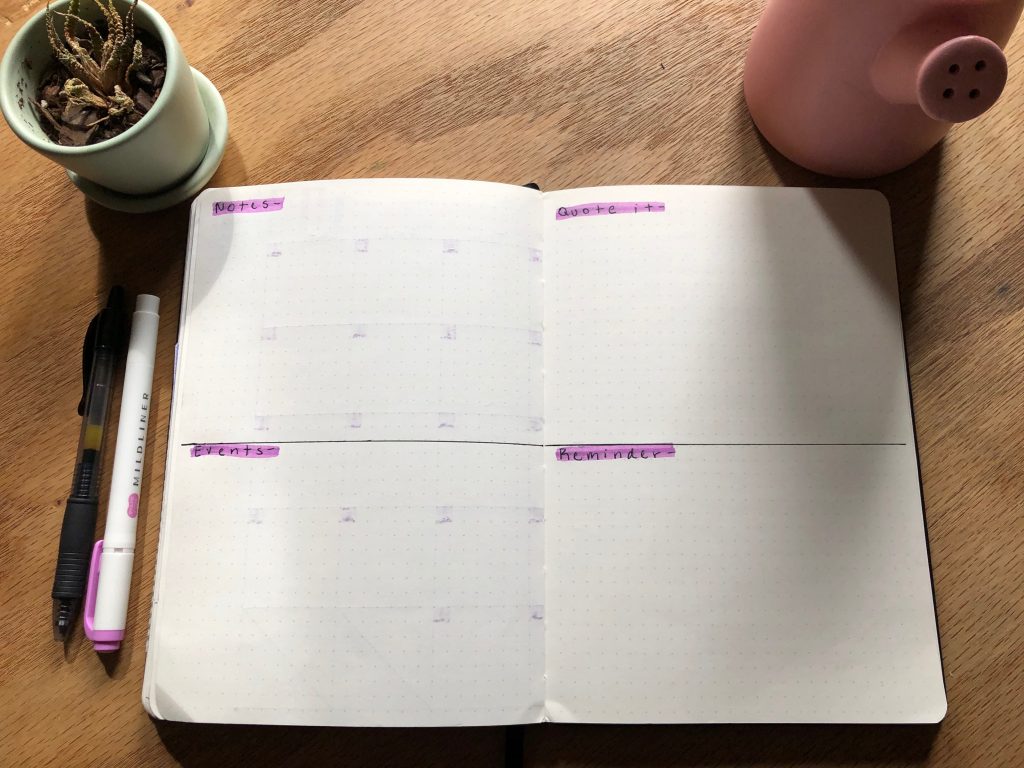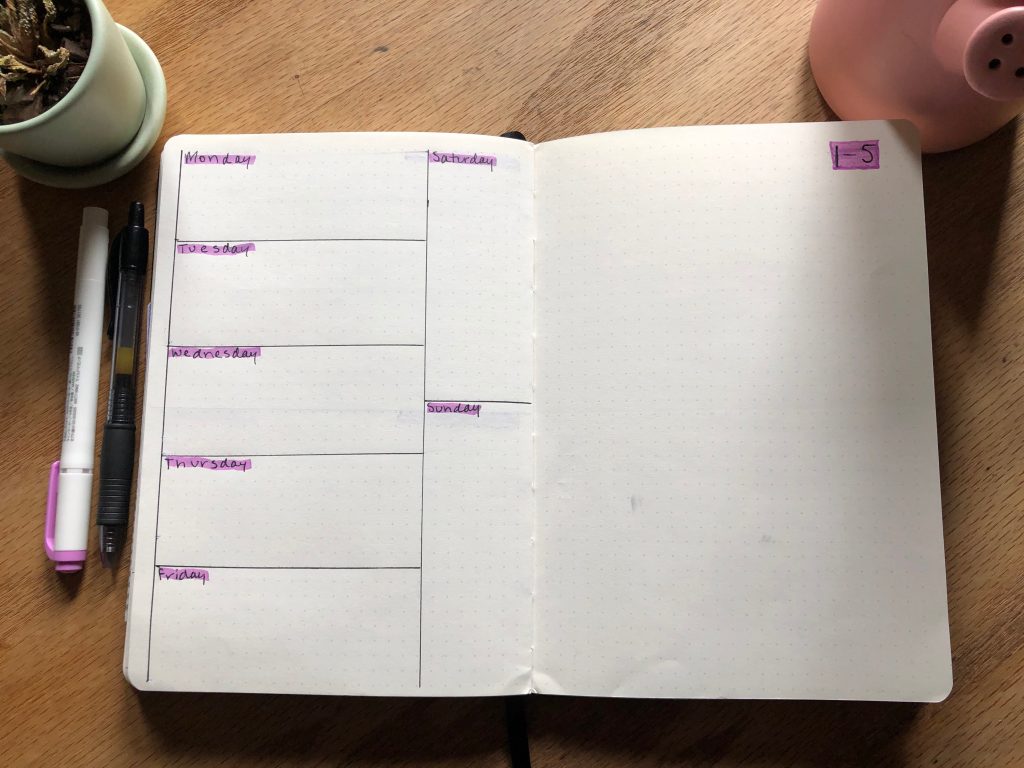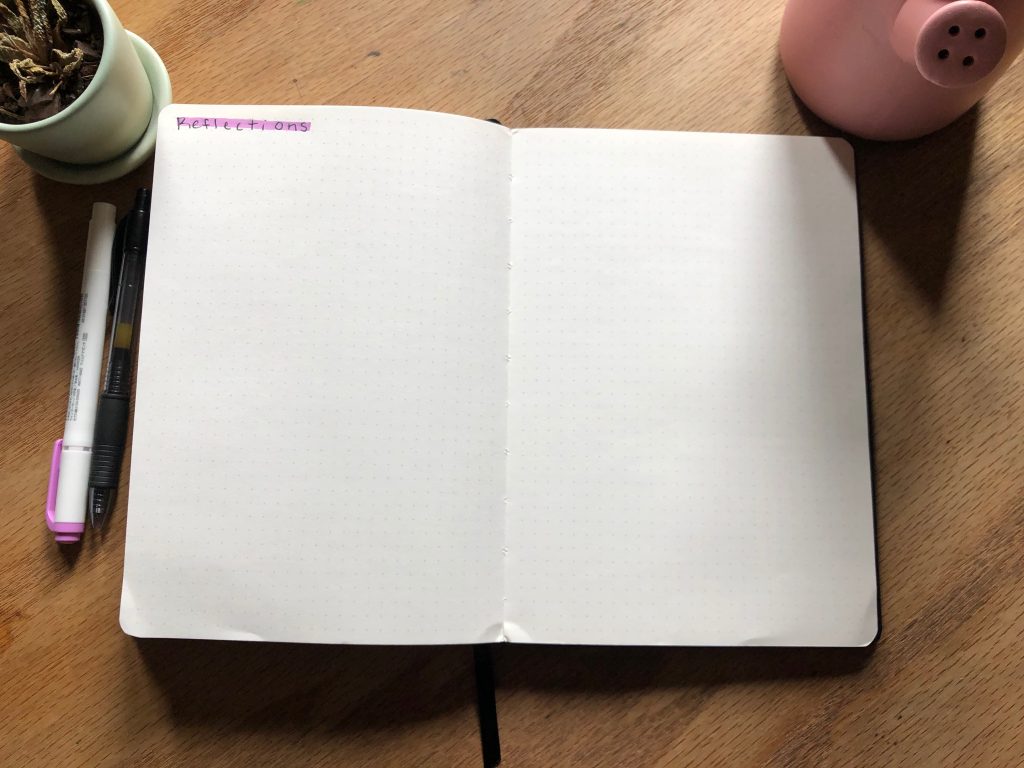According to BulletJournal.com, a bullet journal is a journal that acts as a planner and has an index, future log, monthly log, daily log and custom collections like additional lists for whatever the user wants to do.
Bullet journaling can be confusing and overwhelming, but we’ve created a guide for creating your own.
What you’ll need
- Dotted journal
- Black pen
- Pencil with eraser
- Ruler
Optional
- Colored markets/highlighter
- White-out
- Washi tape
- A snack during this process
Each bullet journal is different and you can do whatever you want with them. Here are some examples of different spreads to try when you’re first starting out.
Each page has dots in order to help with spreads to make even squares, shapes, etcetera.
Calendar

Emily Pearce | Argonaut
Starting in the furthest left corner and leaving four dots at the top, start to measure out eight dots high x eight dots wide or roughly 1 3/8 of an inch. Every journal is different, so consider the dimensions and changes in the journal working with. Counting seven dots to the right and down, start to make seven rows and five columns. Each box should have seven x seven spaces. When finished it should look like an eight x five grid.
After making the structure of the calendar, leave one dot above the grid for the days of the week. Start from Sunday and so on. Referring to a calendar on a phone or memory — if you’re brave enough — start filling in the dates in the top right corner of the boxes.
Finally, starting in the top left corner, four dots to the right and three dots down, start to spell out the month. Each letter is two x one spaces leaving a space in between letters.
Optionally to mark the calendar in the journal for easy access, use a piece of washi tape on the side. To make the calendar more colorful, use a colored marker or highlighter to highlight the month, days in the calendar and important events.
Notes

Emily Pearce | Argonaut
The notes page is very flexible and changes from person to person. This is the section can be used to fill out in-depth events in the month, reminders, goals, ideas, quotes, a habit or a mood tracker. For me, I like to have sections for notes, events, reminders and quotes.
On these two pages, I split notes and events on one page and reminders and quotes on the other. The dimensions for each box is 20 boxes high and 26 boxes wide, splitting the two pages into four sections.
Weekly spreads

Emily Pearce | Argonaut
This is going to be the bulk of the monthly spread. This section changes the most based on how busy, creative and whatever each person needs. This is a simple weekly spread that I do which works well while balancing being a busy student and working a full-time job where every week looks different. Each week will be two pages.
Starting on the left page, count 20 dots out and draw a line vertically down the page. Count eight dots and draw four horizontal lines up to that vertical line first drawn. Each line should be eight spaces apart, creating five sections. On the other side of that vertical line, count 20 dots and draw a horizontal line.
In each section, label the days in the top left corner. There should be seven days of the week labeled here. This is where responsibilities, events and school assignments should go.
The right page is completely empty. During the week, I fill this with daily tasks, dumb drawings, quotes from my friends and keep-sakes from the week as I go. This creates a lot of flexibility and the ability for me to still be creative and busy.
Reflections

Emily Pearce | Argonaut
This is a completely blank section for me to write down at the end of the month what happened, what I learned and realized. These pages act as a journal for me to look back throughout the year at what each month was like, how much I grew and the new things that I discovered.
The biggest piece of advice I can give while bullet-journaling is to not focus on perfection. Bullet journaling is about giving a space for creativity and planning, it doesn’t have to look Instagram-able. With practice, we learn what we like and don’t like.
I have been bullet journaling for three years and I am still changing my spreads. Make something that makes you happy and is functional for your needs.
Emily Pearce can be reached at [email protected] or on Twitter @Emily_A_Pearce.
